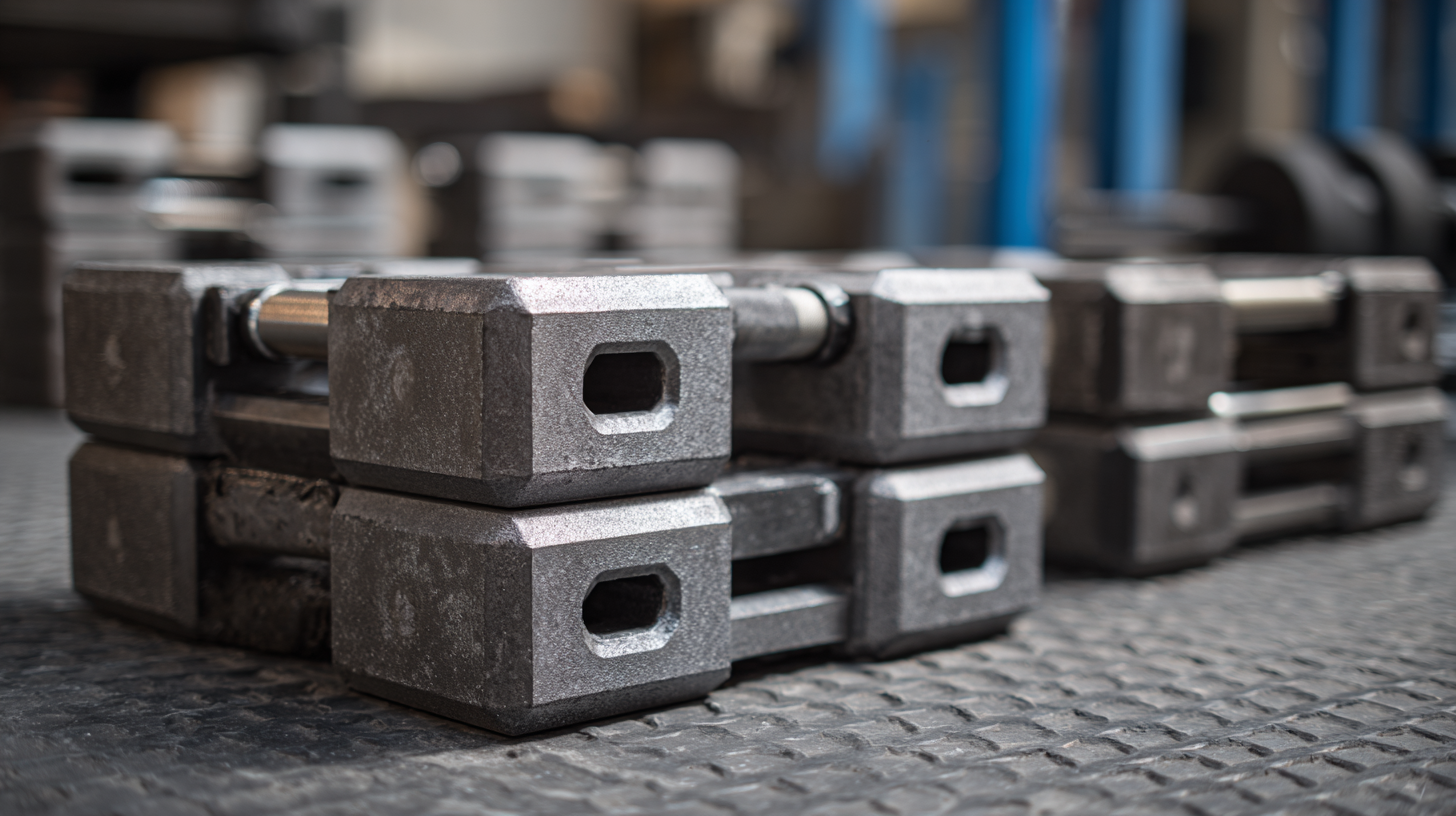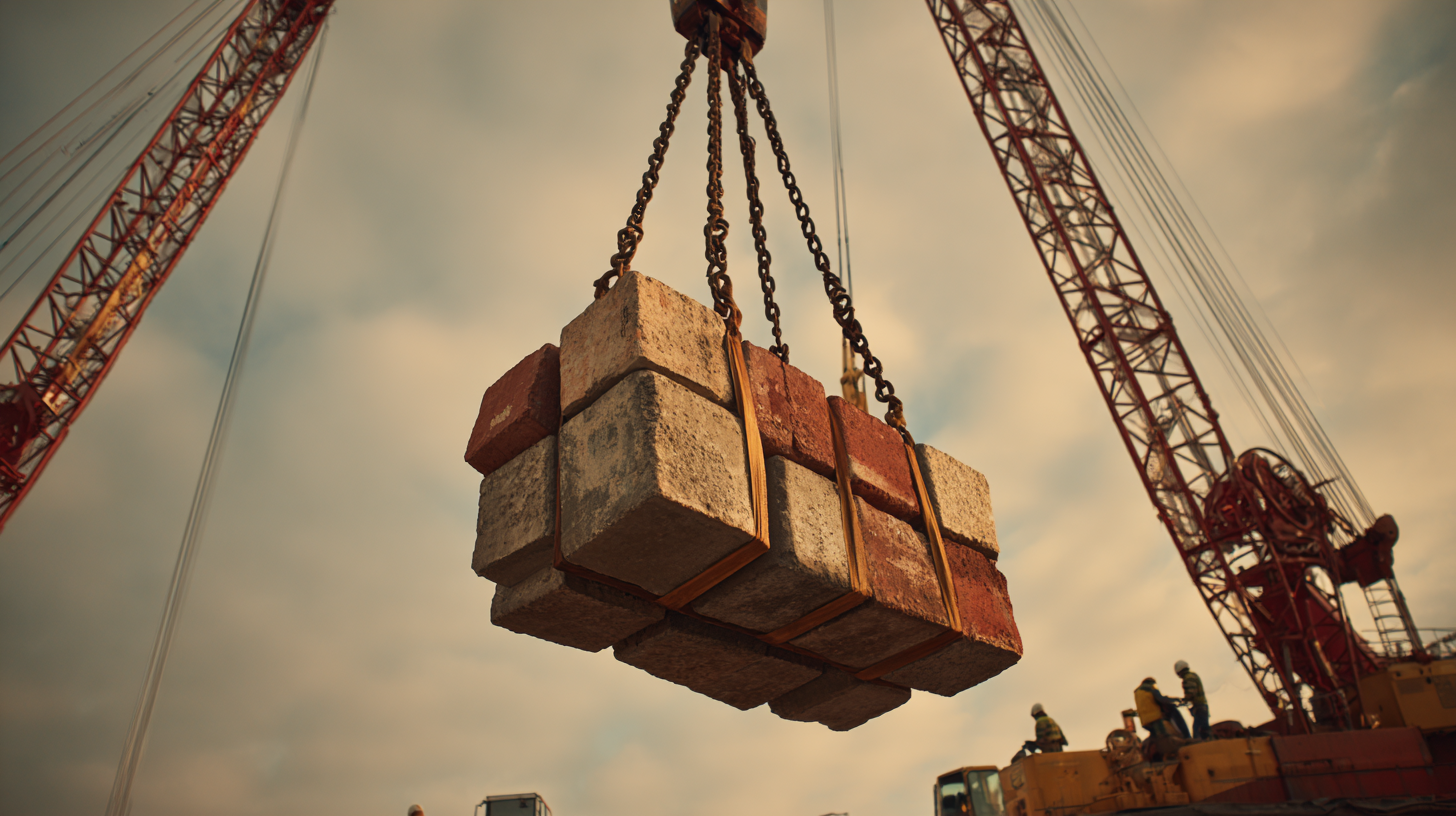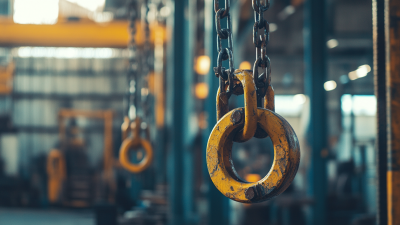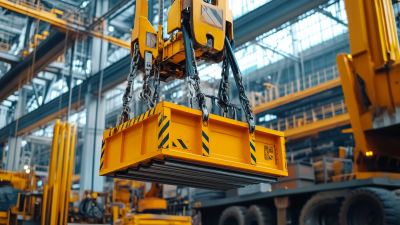How to Choose the Right Lifting Blocks for Your Industry Needs
In today’s fast-paced industrial landscape, the selection of appropriate lifting blocks is critical for enhancing operational efficiency and ensuring workplace safety. According to the Global Lifting Equipment Market report, the sector is projected to reach $50 billion by 2025, with lifting blocks playing a pivotal role in this growth. Industries ranging from construction to manufacturing increasingly rely on specialized lifting solutions to meet their specific needs. Choosing the right lifting blocks not only improves productivity but also reduces the risk of accidents, as improper equipment can lead to costly and dangerous failures. With standards set by organizations such as OSHA and ASME, understanding the various types of lifting blocks, their load capacities, and applications is crucial for industries aiming to optimize their lifting operations. This guide aims to equip you with the knowledge needed to make informed decisions when selecting lifting blocks tailored to your unique operational requirements.

Identifying Your Industry-Specific Lifting Requirements
When selecting the appropriate lifting blocks for specific industry needs, it is crucial to identify the unique requirements of your sector. For instance, in the landscape and horticultural services industry, safety is a major concern due to the prevalence of hazards associated with equipment handling. According to recent reports, over 20% of workplace injuries in landscaping involve improper lifting techniques. Therefore, it is vital to choose lifting blocks that enhance safety and reduce physical strain on workers.

Tips: Always look for lifting blocks that have safety certifications relevant to your industry. This ensures that they meet the necessary safety standards and can withstand the specific weight loads typical for your activities.
Additionally, in sectors like oil and gas extraction, where fatalities have been consistently reported, investing in high-quality lifting equipment can be pivotal for operational safety. The FOG database highlights that using inappropriate lifting tools accounts for a significant portion of workplace incidents. Tailoring your choice of lifting blocks to these high-risk environments not only enhances worker safety but also improves efficiency.
Tips: Consider the operating environment and load types when selecting lifting blocks. Blocks designed for heavy-duty applications in hazardous environments will often provide better durability and safety features than standard options.
Understanding Different Types of Lifting Blocks Available
When selecting lifting blocks for industrial applications, it's essential to understand the various types available. Generally, lifting blocks can be categorized into several main types: sheave blocks, hoist blocks, and block and tackle systems. Sheave blocks are ideal for redirecting or distributing the load efficiently, while hoist blocks are specifically designed for vertical lifting operations. Block and tackle systems combine multiple blocks to increase lifting power, making heavy loads more manageable.

Tips: When choosing sheave blocks, ensure they are rated for the weight you'll be lifting to prevent failure during operation. For hoist blocks, consider factors like the lifting height and the speed required. Additionally, always choose materials suited for your specific environment—rust-resistant materials are crucial in outdoor settings.
Another crucial aspect is the compatibility of lifting blocks with your existing equipment. Ensure that the hook size and shackle dimensions align with your chains or ropes. Understanding the load capacity of each block type will also help tailor your choice to your operational needs, maximizing efficiency and safety during lifting tasks.
Evaluating Load Capacity and Safety Standards
When selecting lifting blocks tailored to industry needs, it's crucial to evaluate load capacity and adhere to safety standards. Just as collaborative robots require thorough risk assessments despite their inherent safety features, the same diligence must apply when choosing lifting devices. Each lifting block must be rigorously tested for its load capacity to prevent failures that could lead to hazardous situations. A robust evaluation index should be established to assess capacity, similar to frameworks used in safety risk assessments for infrastructure like utility poles and dams, ensuring not only effectiveness but also user safety.
Moreover, safety standards play a vital role in the selection process. In recent studies focused on various industries, such as fire safety in workplaces and load restraint systems in rail transportation, comprehensive assessments have highlighted the necessity of adhering to established safety protocols. Ensuring the lifting blocks meet regulated safety standards can mitigate risks associated with human-induced external events and operational hazards. By applying these principles, industries can safeguard their operations while enhancing overall safety and efficiency in the workplace.
Material Considerations for Durability and Performance
When selecting lifting blocks tailored to your industry needs, material considerations play a crucial role in ensuring both durability and performance. Different industries demand specific characteristics from their equipment; for instance, lifting blocks used in construction may require materials that can withstand heavy loads and resist wear from abrasive environments. Metals such as alloy steel offer high tensile strength and durability, making them suitable for heavy-duty applications. Alternatively, for applications that require lightweight solutions without compromising strength, materials like aluminum or reinforced polymer composites may be advantageous.
The environment in which lifting blocks operate also influences material choice. In marine or corrosive environments, blocks made from stainless steel or coated materials provide enhanced resistance to rust and degradation. Furthermore, temperature fluctuations can affect material integrity, so selecting blocks that maintain performance under extreme conditions is vital. By understanding the specific material properties required for different applications, industries can reduce maintenance costs and enhance the overall safety and efficiency of their lifting operations.
Assessing Cost-Effectiveness and Maintenance Needs
When selecting the right lifting blocks for your industry, one critical aspect to consider is the
cost-effectiveness and maintenance needs associated
with the equipment. According to a report by the Material Handling Industry of America,
improper lifting block selection can lead to operational inefficiencies, which can increase costs by up to
20%. Businesses must therefore analyze not only the initial purchase price but also the long-term
operational expenses, including maintenance and repair. For instance,
choosing lifting blocks made with high-quality materials may result in higher upfront costs, but can provide a
lifespan increase of 25%, thereby reducing overall expenditures
in the long run.
Furthermore, maintenance considerations play a pivotal role in optimizing performance and safety. The
Occupational Safety and Health Administration states that regular
maintenance of lifting blocks can lower the likelihood of accidents caused by equipment failure by
30%. Organizations should establish a maintenance schedule and assess the ease of access to
critical components for service. If the blocks require specialized tools or lengthy procedures for maintenance,
additional costs and downtime can spiral quickly. Therefore, thorough research into equipment durability and
service requirements is essential to ensure that the lifting blocks selected align with both
financial and operational goals.
Related Posts
-

The Evolution of Lifting Blocks in Global Supply Chains
-

Master the Art of Selecting the Best Lifting Products for Your Business
-

Ultimate Lifting Blocks Maintenance Checklist for Optimal Efficiency and Safety
-

Exploring Diverse Options for Essential Lifting Supply Solutions
-

What You Need to Know About Lifting and Handling Equipment Trends in 2023
-

Exploring the Surge in Global Demand for Lifting Blocks at the 137th Canton Fair
